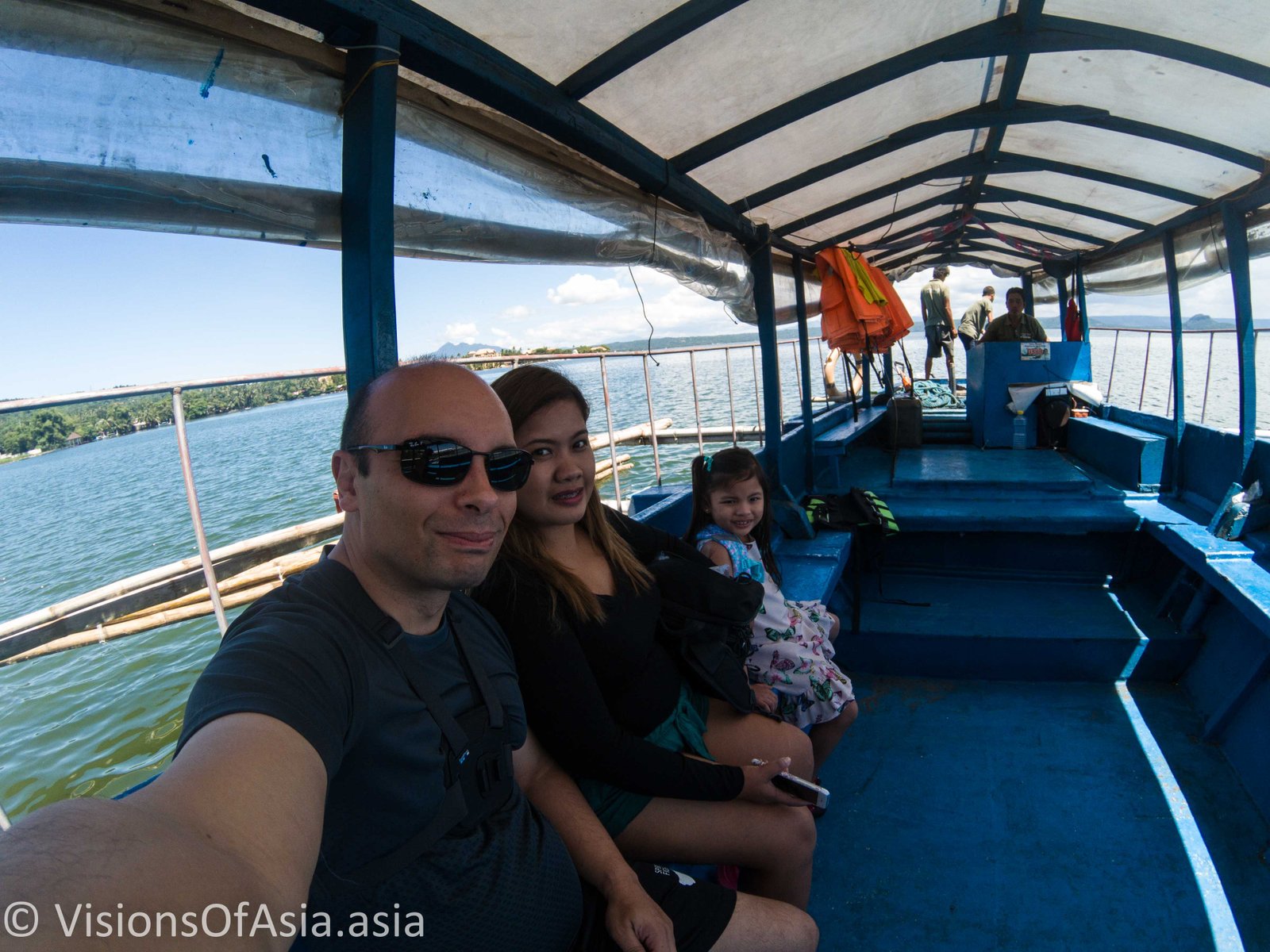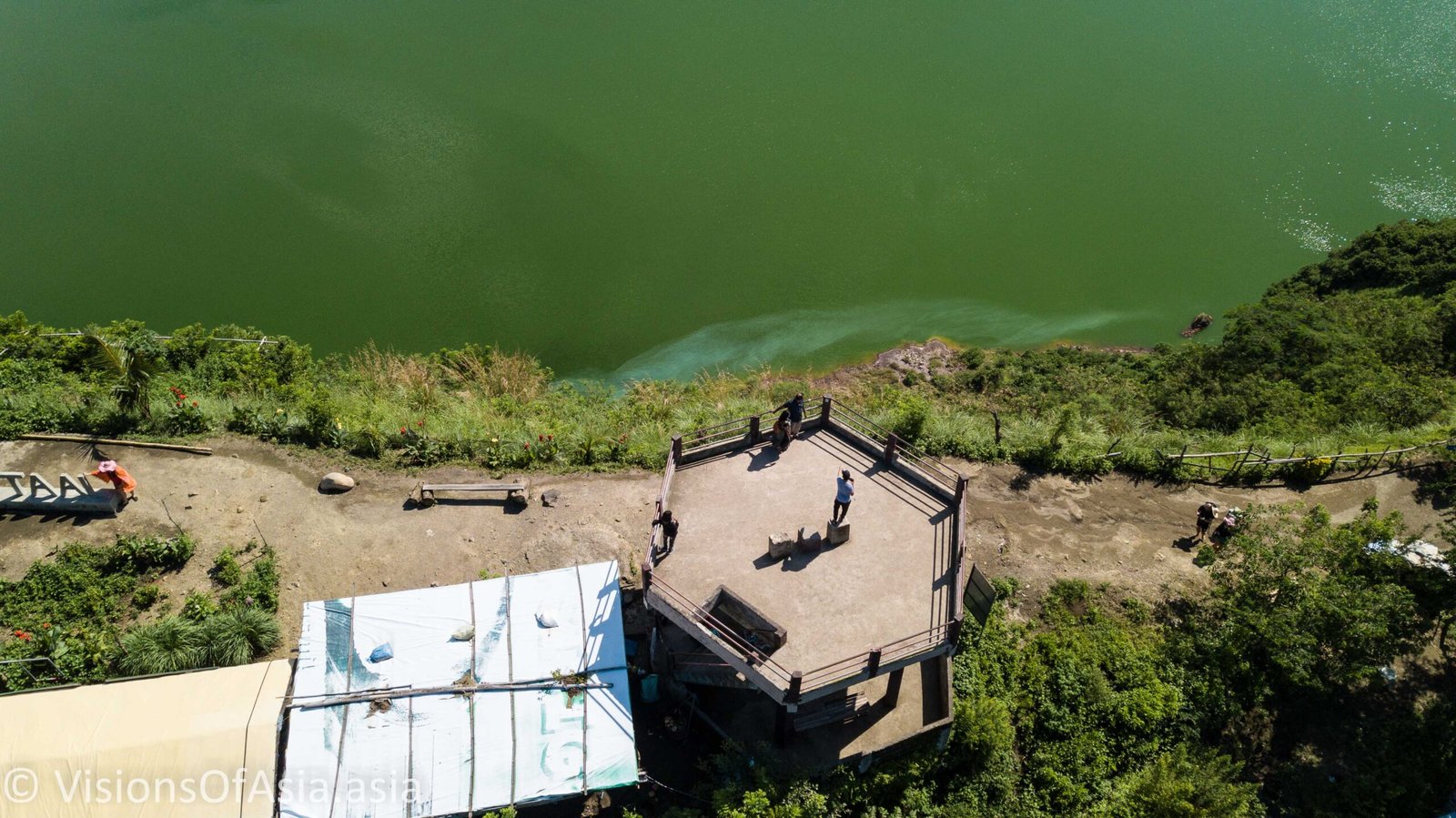In the series of pushing the envelope on barefoot hiking, this time, I tackled the Taal Volcano, a caldera located some 55 kms from Manila, the capital of the Philippines.
Taal Volcano
Taal Volcano is a caldera, a super-volcano that is estimated to have culminated at 18,000 feet in prehistoric eras, before collapsing and making it today the smallest (311 meters) volcano in the Philippines. Originally, the crater was filled with sea water as there was a channel opened between the volcano and the bay near Cavite. Since then, the channel closed, making Taal volcano a large freshwater body.
Although it was quite calm when we visited, the Taal Volcano is not a dormant or extinct volcano, it can be quite active, with a huge magma chamber below. In fact, my first visit was in 2012, and at the time, steam was hissing through some vents in the ground.

Since then, the authorities have restricted the access to the crater of the volcano island as there have been episodes of boiling water projections down there, or toxic gases. To explain why, it is good to know that in 2012, some people even went canoeing on the crater lake!
From Manila to Tagaytay
The one big inconvenience reaching Tagaytay is transportation. Although it is only 30 kms from Manila, it takes almost 3 hours to reach by car.

We took it the lazy way, and just called a Grab car. You must be aware that the app will provide a very low price for the transfer to Tagaytay, which makes it uneconomical for drivers to take you there. So, what we did was to negotiate a price for full day hire and cancel our booking. In all, this costed us 4,500 PHP, but the driver stuck around, hence avoiding us having to roam around finding transportation back to Manila. One caveat however, there is an incredible number of toll fees between Manila and Tagaytay when you take the highway (called “skyway” here).
Finding transportation on the lake
Once you get to Tagaytay, you must find a boat to carry you over the lake. Typically, this would cost about 300 to 500 PHP per head two ways. Since 2012, it seems most of the locals have been replaced by resorts who offer well-organized transfers across the lake, mainly for Koreans.
It was thus no surprise that our driver recommended us a Korean-operated resort. The resort operates an “all inclusive” package which includes boat crossing two ways, horse ride up and down the mountain and (if you wish) Korean buffet. Prices go from 1300 PHP per head to 1420 PHP with meal included.
Boat Crossing
The boats used on the lake for the crossing are those typical “barca”, made of a central hull and two balancers. The lake being originally the crater of a volcano, there are often algae that can get tangled around the propellers. In our case, the pilots had to jump in the water to release the propellers.

Horse riding
There are a number of villagers living on the volcano itself. Namely some impoverished locals whose only livelihood is around having tourists riding their horses up and down the volcano’s crater.
As we were hesitating about who would take our daughter on its horse, Maria-Sophia announced determinedly that she would ride her own horse! It was thus that she got to climb on her own horse, with the guide taking a ride behind her.

The climb up is not very strenuous and the cliffs are not that steep. So, riding a horse seems a bit too much. Nevertheless, many tourists fall into the trap, but it is extremely uncomfortable to ride.
In my case, it seems my heavy photo backpack was causing the horse to have some issues with balancing, so my guide kept on telling me to keep my balance. I rode the horse barefoot, but later, when they needed to rearrange the saddle (a close way to the top), I dismounted and carried on on foot.
Barefoot hiking on the volcano
Strangely for people who keep climbing the volcano with mere flip-flops, the guides were a bit scared and surprised to see me hike up barefoot. Nevertheless, most of the terrain is sandy, with some edgy stones in some places. As such, I would not deem it as one of the most challenging hikes I did.
The crater
I mentioned earlier, the Taal Volcano is actually a caldera, a sort of super-volcano. This explains why there are actually two craters: a first, the largest, being the calderas’s main crater, and a second one which appeared later in the center of the lake. This gives the volcano that peculiarity of having two lakes in its midst. The best way of having an idea of the gigantic nature of this volcano is through drone views. Here, below, a view of the observation deck set up on the rim of the crater.


This video also probably gives you an idea of the beauty of the place.
A very touristy place
Taal being this natural curiosity, it is also one of the main touristic attractions for the area. They did quite some nice work to make the crater’s surroundings likable for tourists, like planting flowers.

Similarly, a bit further, they planted red carnations, again, providing some color in the otherwise greenish tone of the crater.

The whole family then took a dronie and a selfie before the crater. Our daughter was rather disappointed that she could not see lava or magma as in a “real” volcano. But this volcano is quite active. All the more as since our last visit, it is prohibited to walk down to the crater’s edge.

A dronie in front of the Taal Volcano crater 
A gopro selfie before the crater.
As I walked along the crater, a Filipino seeing me barefoot took out his flip-flops and started walking barefoot too, giving me the thumbs-up.
Hiking down barefoot
After having suffered with the discomfort of the horse ride, I decided to go down the mountain barefoot. As the path was downward and furthermore, I was walking on a terrain that was mostly dusty, I arrived to the end point at almost the same time as the horses that departed with me. And this is only logical, as the horses can only ride as fast as their guides let them.
Once again, the views going down were absolutely gorgeous.
A hike worth the while
Japanese say that only fools attempt to climb mount Fuji twice. In this case, it was the second time I climbed Taal Volcano, but this time, I did it mainly on (bare)foot.
It was nice to come back to the place several years after my first visit, and more particularly to bring back my daughter who had visited the place as a baby.

